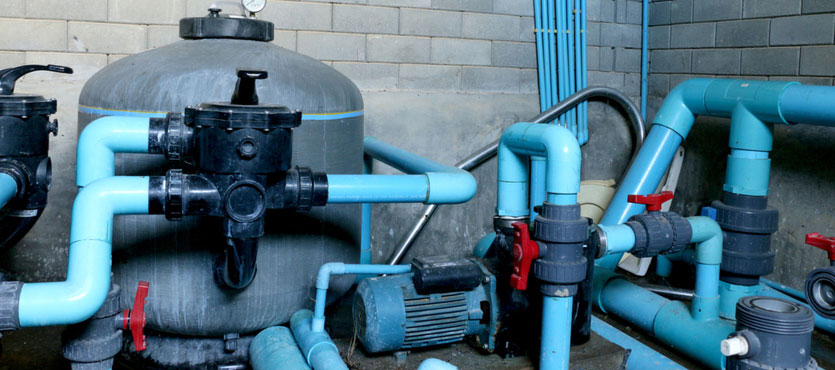Your pool filter is an important component to your swimming pool and knowing if it is working properly can save you a lot of time and hassle. A key sign that it’s not working is if you keep spending time cleaning your pool, only to find it dirty again. If your pool filter is not working, it will just re-circulate dirt back into your pool.
Here are two ways to check if your filter is working:
#1. Add dirt to your pool skimmer
Add diatomaceous earth (DE) to your pool skimmer, stick to around a scoop or two – no more than the size of a 1lb coffee cup. The moment you do this, go to the pool jets to see if it is returning DE into the pool, or if the water suddenly looks cloudy. If it is, you likely have an issue with your filter.
Side note: Do not add DE to a cartridge filter or you risk causing too much strain on the fabric elements. Instead, use cellulose fiber-based filtration powder.
#2. Use your pool vacuum to test for filter issues
If you have an automatic pool vacuum set up in your pool, you can use this to test out the effectiveness of your pool filter as well. Connect the filter to your vacuum and hose using the skimmer suction port. Make sure there’s some dirt on the bottom of your pool otherwise it won’t give you much feedback.
When the vacuum is running, check the jets or returns to see if they are spouting out clear or cloudy water. If cloudy water is coming out, that means the dirt sucked out by the vacuum is simply recirculating back into the pool and essentially running for no reason.
The First Step to Fix Your Filter
If your filter is pushing dirt back into the pool, the first step is to clean out the filter and then perform a backwash valve inspection. This includes fully taking apart the filter and inspecting each internal component to see where the damage is.
If you are operating a sand filter, check to make sure the sand in it is not over three to four years old. If so, it is time to replace the sand.
5 Most Common Issues with Pool Filters
True Grit
This is the most common issue associated with sand or debris floating back into the pool after it’s been sucked up by the filter. If you have a sand filter, the problem may relate to cracks in laterals or a broken standpipe.
If you have a DE filter, worn out grids have likely developed tears over time. Check the grids as well as the standpipe o-ring for wear and tear. Also, be on the lookout for adding too much DE powder when recharging the grids.
Too High of Pressure
If too much pressure builds up inside of the tank, it can cause issues with the filter. This will occur if the filter is not large enough for the pump. A dirty filter can also cause this same issue to arise.
When left unchecked, high pressure will cause laterals to crack and leak sand back into your pool. In addition, it can cause a cracked tank or cause the filter lid to blow off.
Too Low of Pressure
High pressure is an issue, and so too is low pressure. When pressure is too low it can obstruct water from flowing into the filter, thus interfering with normal pool circulation.
Check out the pump strainer basket and impeller to make sure neither is clogged. In addition, check the pool skimmer to make sure it does not have a clogged basket, or a weir trapped in the incorrect position.
Damaged Spider Gasket
This small center ring and spokes are located inside the multi-port valve on DE and sand filters. Over time, this piece can become damaged or worn out and needs to be replaced. As a result, there may be leaks around the valve or water may come through the waste line even when the valve is set to “filter”.
Replace Cartridges or Grids
Replacing the cartridge or grid is a common solution to pool filter problems, although it’s not always easy to find the correct match. The owner’s manual may offer helpful tips.
Leave it to the Pros!
At Pools by Signature, we are the professionals when it comes to fixing, building, and maintaining top-notch swimming pools in Florida. Contact us today to learn more or to get a quote to fix your pool filter.

